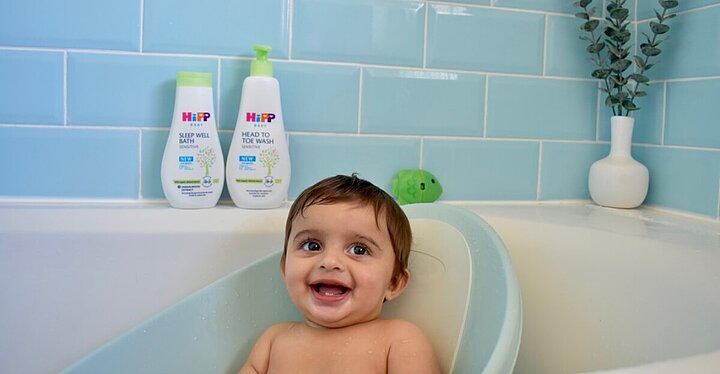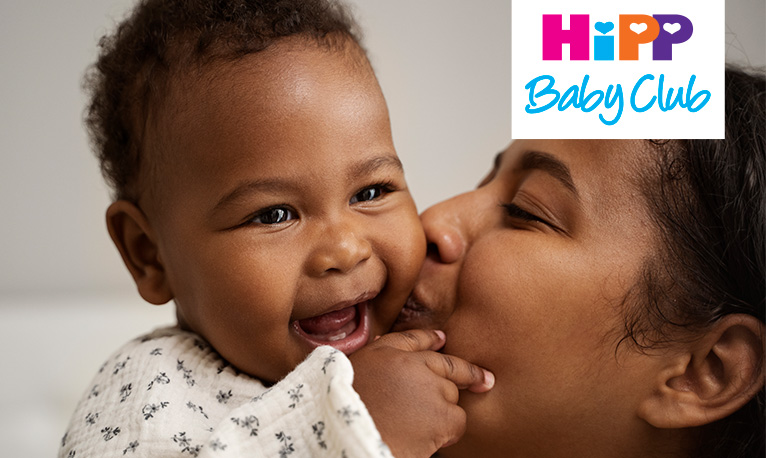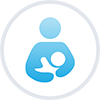A guide to bathing your baby
Newborn | | HiPP Organic
Bathing your baby can be a daunting task, especially for first-time parents. From choosing the perfect baby bath tub to making sure the water temperature is just right, there's a lot to consider when it comes to keeping your little one clean and comfortable. But don't worry - we've got you covered with our ultimate guide to bathing your baby! In this post, we'll share all the tips, tricks and equipment you need to make bath time a breeze for both you and your baby.
Introduction to bathing babies
First things first, you will need to gather all the necessary supplies. These includes a soft washcloth, baby soap if you are opting to use soap, a cup for rinsing, and a bath mat or towel. You will also need to make sure the room is warm enough - babies lose heat quickly, so the bathroom should be nice and cosy. Some parents like to fill up the tub before starting, but you can also run the water while you undress and wash your baby. Just make sure you’re happy with the temperature.
What equipment and supplies you'll need for bathing a baby
Here's a quick rundown of what you'll need to get started:
- A soft, clean towel or two
- A sink, tub or basin large enough to comfortably hold your baby (a kitchen sink will work in a pinch)
- If you are opting for soap and/or shampoo, look for ones that are specifically designed for babies
- A soft washcloth or sponge
- A cup for rinsing off soap and suds
- A clean nappy and clothes to get your baby dressed afterward
Now that you have all the supplies you need, let's go over the actual bathing process step by step.
Best time of day for bathing your baby
There is no one definitive answer to the question of when is the best time of day to bathe your baby. Some parents prefer to do it in the morning as part of their child's daily routine, while others find that an evening bath is a nice way to wind down before bedtime. Ultimately, it is up to you and what works best for your family's schedule.
If you are bathing your baby for the first time, there are a few things to keep in mind. First, be sure to have everything you need within reach. Second, make sure the room is warm enough - babies lose heat quickly and can get hypothermia easily. Always support your baby's head and neck while in the tub and be very careful not to slip on any wet surfaces.
Frequency of bathing your baby
Babies often don't need a bath every day and bathing frequency also depends on your baby's skin type. If your baby has dry skin, you may want to bathe them less often to avoid further drying out their skin. If your baby has sensitive skin, you may want to talk to a doctor or paediatrician before bathing them too frequently. Whatever bathing frequency you choose, be sure to avoid any soaps or lotions before 4 weeks of age and use gentle cleansers and moisturisers that are designed for babies' delicate skin.
Be sure to remove any soap from behind their ears and in other creases of their skin where it might irritate them.
How to give a baby a sponge bath (topping and tailing)
Assuming you have all of the necessary supplies gathered and within reach, you're ready to start giving your baby a sponge bath. Here's a step-by-step guide on how to do it:
- Fill a bowl or bath with warm water. Test the water temperature with your wrist or hand to make sure it's not too hot before you place the baby in the tub, making sure they are well supported so that their head cannot go below the water.
- Use a soft washcloth or sponge to clean your baby's face, starting with the eyes (be careful around this area) and moving down to the mouth and nose. Remember to gently clean behind their ears.
- To clean the nappy area, gently lift your baby's legs and wipe front to back (always) with a wet washcloth or sponge. For boys, it's also important to wipe down the penis. Avoid pulling back any foreskin and clean under the testicles.
- Once you're finished cleaning, pick your baby up and wrap them in a soft towel. Dab them dry and ensure you dry any folds of skin, such as under the arms, little leg rolls or in between the toes. They can get cold, so try not to leave them exposed to the cold air for any length of time. They will soon let you know if they’re unhappy!
As your baby grows you can get them involved and start to teach them how to keep themselves clean, allowing them to wipe over or getting their little hand and demonstrating with them.
Benefits of baby massage
There are many benefits to baby massage, including promoting bonding between parent and baby, helping to ease colic and gas pain, aiding in digestion, and improving sleep. Baby massage can also help improve your baby's circulation and increase immunity too. Baby massage is a nice follow-up to a bath; especially as part of a bedtime routine.
How to massage your baby
There are a variety of different products and techniques you can use to massage your baby. The type of product you use will depend on your preference and your baby's skin type. You can also attend a baby massage class as the practitioner will help guide you.
Products:
Oil: Avoid olive oil on your baby's skin and opt for safflower, almond or coconut oil.
Lotion: Remember your baby has thinner, more sensitive skin. It takes some time for them to build up natural skin barriers. If opting for a lotion, chose one with minimal chemicals and one that's specifically formulated for babies. Avoid lotions until your baby is well over 6 weeks old.
Techniques:
Long strokes: Start at your baby's head and neck and slowly stroke down their back and legs. Use both hands if needed to cover more surface area. Repeat this motion several times.
Circular strokes: Using both hands, make small circles on your baby's back, chest, and tummy. You can also massage their arms and legs with circular motions.
Avoid any areas that seem sensitive or uncomfortable. If you're not sure how much pressure to use, err on the side of caution and use lighter pressure until you get a feel for what works best for your baby.
Now that you've read our guide to bathing your baby, you should feel more confident about safely and effectively giving your little one a bath. Bathing can be a special time for both of you and the various tips and tricks outlined in this article will help ensure it is nothing short of an enjoyable experience.


